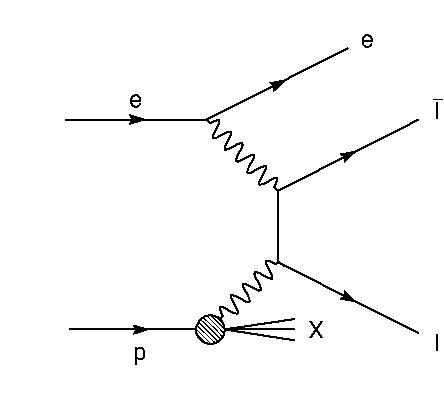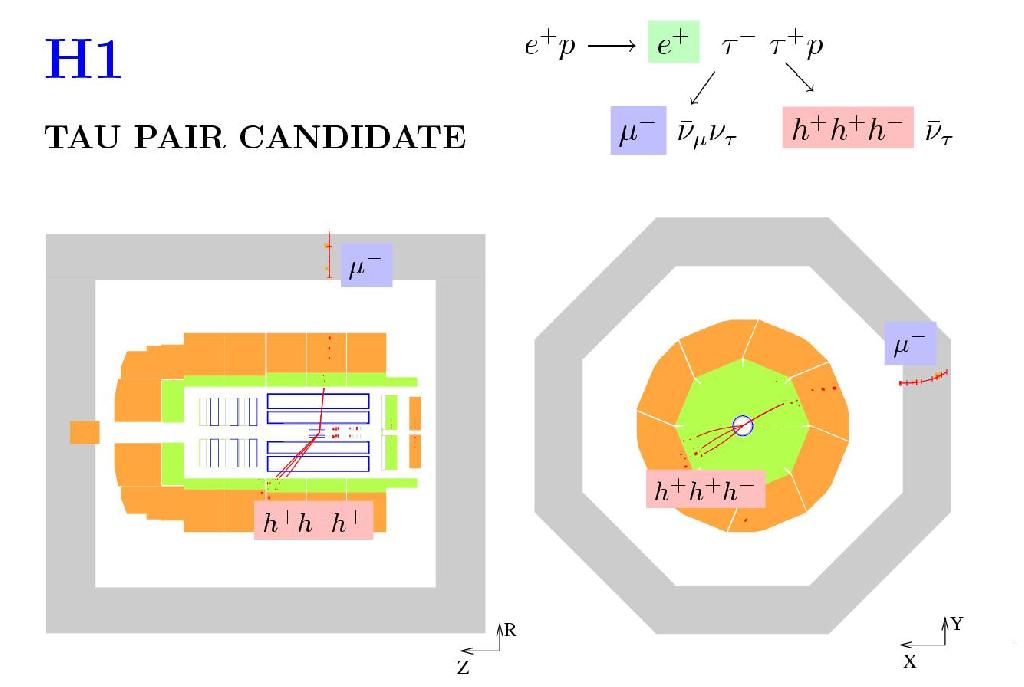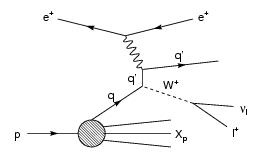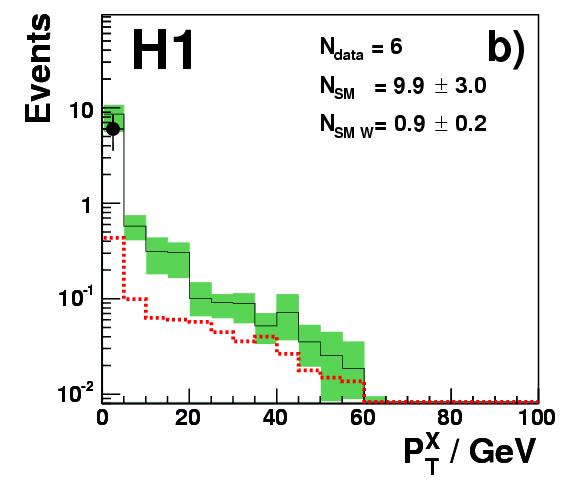

Tau Lepton Production in ep Collisions at HERAThe H1 Collaboration |
The production of tau leptons in
 |
 |
The measurement of tau pair (τ+ τ-) production is performed at low transverse momentum and considers both leptonic and hadronic tau decays. This measurement complements that of electron- and muon-pair production previously performed by the H1 collaboration. The main contribution to the signal is the production via photon-photon collisions, as shown right. The proton can remain intact (elastic production, which dominates) or be dissociated in the interaction (inelastic production). The incident electron is usually scattered at small angles and is often not observed in the H1 detector.
In total, 30 τ+ τ- events are selected by the analysis, in agreement with the Standard Model (SM) prediction. SM background arises due to misidentification or mismeasurement of deep-inelastic scattering (DIS) neutral current (NC, ep → eX), photoproduction (γp → X), and electron- or muon-pair production (ep → el+l-X). Each process contributes with a similar rate to the total background expectation. An example event in the semi-leptonic channel is shown far right, where one tau lepton decays to leptonically to a muon and the other tau lepton decays to three charged hadrons. The cross section for the production of tau lepton pairs is measured for the first time at HERA. Elastically produced tau lepton pairs with the tau leptons in the phase space 20° < θ < 140° and PT > 2 GeV are covered by the analysis. The cross section is determined to be 13.6 ± 5.7 pb, which agrees well with the SM prediction of 11.2 ± 0.3 pb.
 |
 |
In the search for events with an energetic isolated tau lepton and with large missing transverse momentum (τ + PTmiss), tau decays are identified in the hadronic channel only. The main signal contribution comes from real W production, with subsequent leptonic decay, as shown far left. This search complements the previous H1 measurement of the production of events with an isolated electron or muon and large missing transverse momentum, which revealed an excess over the SM expectation of events containing in addition a large transverse momentum hadronic system. In this analysis, the main SM background arises from narrow jets in charged current (CC, ep → νX) interactions.
In the final sample 6 events are observed in the data, in agreement with the SM prediction of 9.9 ± 3.0. The data events are concentrated at low values of hadronic transverse momentum, as shown left, where the SM expectation is domainated by the CC background. No candidate event is observed in the region of large hadronic PT > 25 GeV, where 0.39 ± 0.10 events are expected from the SM, including 0.20 ± 0.05 events from W → τ ν decays (shown as the dashed red histogram in the plot). A model independent upper limit of σ < 0.85 pb at 95% C.L. is obtained on the production cross section of events containing an isolated tau leptons and missing transverse momentum, measured in the phase space 5° < θ < 140°, PTτ > 10 GeV and PTmiss > 12 GeV. This limit is higher than the cross section measured in the electron and muon channels meaning that the two measurements are compatible, as expected from lepton universality.